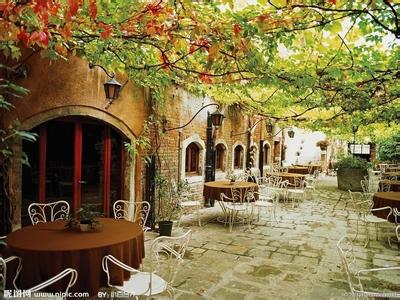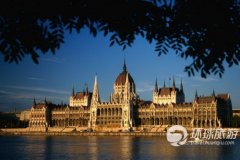French coffee culture doesn't seem to be about taste.

The French do not seem to pay attention to the taste, but the environment and atmosphere. Most of them do not want to drink alone behind closed doors, but join in the fun outside, even if the price of a small cup is enough to make a pot at home.
French people drink coffee slowly, taste it carefully, read books and newspapers, talk about it, and "soak" for most of the day. Because of this traditional and unique coffee culture, French coffee resting places can be found all over the streets, under the shade of trees, by the side of the road, by the square, on the riverbank, on cruise ships, on street balconies, and even on the Eiffel Tower. And the form, style, size are not limited to one style, there are coffee shops, restaurants, halls, rooms.
The most popular and romantic ones are those open-air cafes, which are almost a portrayal of French life. Many open-air cafes occupy many public places, such as a corner of the square and sidewalks on the streets, even on the bustling Champs-Elysees, where colorful umbrellas have become a unique street view of Paris. The chairs of the cafe are almost all facing the road, sitting in this intentionally set auditorium, the road in front of which is the big stage where the script will never be repeated.
In addition to those open-air cafes that look up to the sky, there is no shortage of magnificent or simple and elegant cafes in about 170000 cafes in France. Especially in Paris, some cafes are themselves legendary places of interest. In the old dynasty of the Middle Ages, the focus of French cultural life was on the court. In the age of enlightenment in the 18th century, the focus of culture began to shift to various salons, clubs and cafes. The LeProcoPe Cafe in Latin, for example, is associated with the French Revolution that influenced the world more than 200 years ago. Voltaire, Rousseau and Diderot, the thinkers of the 18th century European Enlightenment, as well as Robespierre, Danton and Mara, the three heroes of the Great Revolution, were all regulars here. Several works by Voltaire and Diderot's world's first encyclopedia were written here, as well as the red, white and blue tricolor hats that symbolized the Revolution for the first time.
Important Notice :
前街咖啡 FrontStreet Coffee has moved to new addredd:
FrontStreet Coffee Address: 315,Donghua East Road,GuangZhou
Tel:020 38364473
- Prev

Budapest Coffee Culture Coffee Culture in Budapest
Budapest has a rich coffee culture, and it is an ancient and modern city with harmonious development. Castle Hill is a missed scenic spot in Budapest. Remember to soak in the extraordinary hot springs here. Budapest Capitol and Danube River Traffic: Budapest's traffic is very developed, in terms of external transportation, the suburbs of Ferihegy International Airport many international
- Next

A native of San Francisco who measures life with a coffee spoon.
San Francisco is indeed a holiday paradise. The cultural and historical scenery is relaxed and pleasant, the restaurant delicacies are surprising, and the magnificence of the hotel is beyond imagination. There are also all kinds of theatrical performances and sports in the big American cities that tourists expect. Overlooking San Francisco from the air, the city is as neat as a transistor radio: exquisite Victorian buildings, four
Related
- Beginners will see the "Coffee pull flower" guide!
- What is the difference between ice blog purified milk and ordinary milk coffee?
- Why is the Philippines the largest producer of crops in Liberia?
- For coffee extraction, should the fine powder be retained?
- How does extracted espresso fill pressed powder? How much strength does it take to press the powder?
- How to make jasmine cold extract coffee? Is the jasmine + latte good?
- Will this little toy really make the coffee taste better? How does Lily Drip affect coffee extraction?
- Will the action of slapping the filter cup also affect coffee extraction?
- What's the difference between powder-to-water ratio and powder-to-liquid ratio?
- What is the Ethiopian local species? What does it have to do with Heirloom native species?

